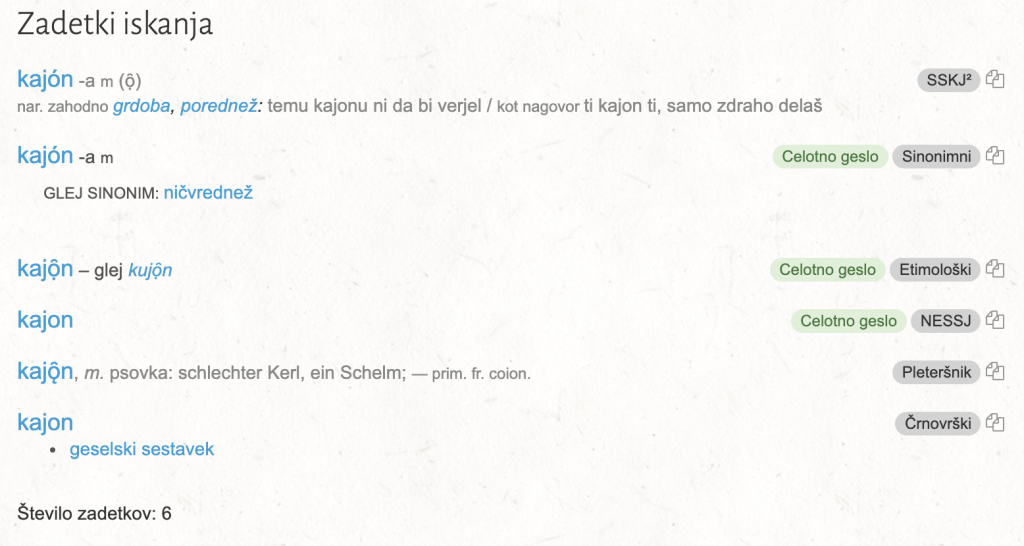K-a-j-o-n. This word does not look German to me. It has a flair that hints at an origin not in the Germanic family. How did it end up in the language? What’s it doing? A windy path will lead us to an answer connected to human anatomy. Walk with me!
My first encounter (as best as I can recall) with this word was in a song that I was singing as part of my local men’s choir (Männergesangsverein Maria Rain). The song is entitled “Der Summa geht uma” (author to be added later). Here’s the text of the song (circumflexes over the vowels are original):
Der Summa geht uma, dâs Lab fâllt von die Bam,
hiâz keman die lustig’n Holzknechtbuâh’n ham. (2x)
Drum g’freut mi der Summa und b’sunders auf d’Nâcht,
dâ kriâg i viel Bußlan daß schnâlzt und daß krâcht. (2x)
Kathrina, bist drin na? Lâß mi eine zu dir,
is ma kâlt in die Finger, lâß mi ânwarm bei dir.
Is da kâlt in die Finger, ziâg Hândschüâchlan ân,
geh weg von mein Fenster, du falscher Kajon!
So, what does this “Kajon” mean? While the members of the MGV could give a general sense of what the word means (referring to a male with perhaps a somewhat less than stellar reputation), the etymology was still lacking. So, I turned to Anton Überfelder’s Kärntnerisches Idiotikon*, the first stop to see if the word was recorded when this dictionary of Carinthian German was published in 1862. No luck there (unless I’ve overlooked something).
An interpolation: I’m interrupting this narrative to say I’ve just now checked Matthias Lexer’s Kärntisches Wörterbuch (also published in 1862–What was going on with dictionary-makers in 1862, one wonders? Plus, he then published a Middle High German dictionary–which is why I knew his name before moving to Carinthia and realizing he’s from here!). Alas, no entry for “Kajon” there either. ** Another interpolation: After seeing some of the spelling variation in the Slovene entries, I checked for “Kujon” and still had no luck.
Whence cometh this word? Since I couldn’t find the word in any dictionaries I had (older or modern), I thought it might be from Slovene (see this talk page on Wikipedia for a discussion of “Slovene” versus “Slovenian”). The history of the Slovene-speaking people within the borders of Austria offers insight into lexical transfer, so, given that the word doesn’t look German (to me, at any rate), I thought an expedition into a Slavic language well-warranted. The problem: I don’t speak Slovene.
A challenge is a challenge regardless of circumstance, so, full of boundless curiosity, I found a Slovene dictionary and typed in “kajon,” and happily surprised, saw this:

So far, so good, but I didn’t understand a thing (other than the German words!), so I clicked my way through the links. After clicking on each entry, I entered the text into Google Translate (O, what a blessing!). The word seems to mean something along the lines of “ugly, naughty (boy).” I felt like I had not only struck gold but plucked it polished from the ground. The terms in bold blue italics (“grdoba” & “porednež”) likewise have entries (rendered into somewhat passable English via Google Translate) that refer to “naughtiness/ugliness” and “males.” So, it seems like the puzzle was solved. Given my lack of knowledge of Slovene, I didn’t figure I would be able to go further (e.g., by looking at Slovene etymological dictionaries that would likely be in Slovene). And, yet…I did.
The third entry above (marked “Etimološki”) has the following information:

Ah–“nem.” probably means “German” (a guess based on the fact my German-Slovene dictionary has the word “nemško” in it). So, the word is either from German or from “furl.” (Friulian!). And then I see languages I’m far more familiar with: Italian “coglione” and French “couillon” (not to mention Spanish “cojones”). Testicles. We’ve finally made it to the anatomy as promised at the beginning of the entry. The rest of this explanation from the Slovene etymological dictionary gives the original Latin term “cōleōne” (testicles), which is itself derived from the Latin “coleus” (sack, scrotum) [this is derived from the Greek “κολεός” (a sheath, an urn) according to Wiktionary].
There’s more to be figured out here. I don’t know when or how the word entered German, but I do know what the last word of the song means in an etymological sense. It’s an example of a taboo word that references genitalia to demean a person. In this case, it’s a metonym–a metaphorical reference to a part of a whole to refer to the whole entity. From a Carinthian dialect song whose meaning borders the bawdry (well, it crossed the border, I guess) to a term related to the human anatomy, this word well deserves a place in the Mundartgarten given its history of borrowing and transplanting.
*This text is available in printed form from Verlag Johannes Heyn in Klagenfurt with a modern typeface; the editor is Alfred Goubran.
